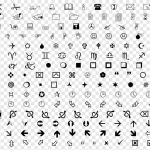
Course and syllabus of SQL (Structured Query Language) is a database query language used for data storage, manipulation, and retrieval. SQL was developed by IBM in the 1970s and was adopted as an American National Standards Institute (ANSI) standard in 1986. Although most database systems use SQL, they frequently include proprietary extensions that are only used on their platform. Oracle, for example, uses Pl/SQL. SQL subsets include Data Definition Language (DDL), Data Manipulation Language (DML), and Data Access Language (DCL) (DCL).
SQL Fundamentals
What is SQL? What is SQL’s purpose? Who should study SQL? What are the SQL subsets? What are the differences between SQL and NoSQL?
Introduction to Databases and Relational Database Management Systems
What exactly is a database? Database Objects, Database Tables, Table Records, Interactional Database Management Systems, SQL/Relational Databases vs. No SQL Databases, Kinds of Database Management Systems
Set up a Database Engine
Install the MS SQL Server, Oracle, or MySQL Database Engine. Run SQL Query by selecting New Query in SQL Server Management Studio. SQL commands must be typed before they can be executed.
SQL syntax
Keep an eye out for SQL Syntax, SQL Keywords, SQL Case Insensitivity, SQL Comments, SQL Commands, and SQL Statements. SQL Data types include numeric, date and time data, character and string data, Unicode character string data, binary data, and odds and end data.
SQL operator
Arithmetic Operators include Arithmetic Operators, Comparison Operators, Logical Operators, and Bitwise Operators.
SQL expressions
SQL expressions include SQL Boolean Expression, SQL Numeric Expression, and SQL Date Expression.
Remarks on SQL
SQL Comments are used to either clarify or prevent SQL statements from being executed. Comments can be single-line or multi-line.
Language of Data Definition
SQL Data Definition Language commands include Create, Alter, Drop, Truncate, and Rename.Data Definition Language Operations, Make a database and then use it. Database renaming, database deletion, and so on. Set up a table. Add a column and rename the table to match an existing table. Add several columns to an existing table. Make a modification to an existing column, Drop a Table, Truncate a Table, and Drop a Table are all options.
Language for Data Manipulation
Data Manipulation Language Operations, Table operations include retrieving information from a table, inserting data into a database, updating existing data in a table, and removing all entries from a table.
commands in SQL
GRANT and REVOKE commands, for example, are DCL commands that deal with the rights, permissions, and other controls of the database system.
SQL Functions
SQL has several built-in functions for performing calculations on data. SQL Aggregate Functions include SQL Aggregate Functions, SQL String Functions, SQL Date Functions, and SQL Scalar Functions.
SQL queries are classified into two types: SQL Queries and Sub Queries.
A query is a method of searching through a set of data, whether small or large, to find the information you’re looking for. A subquery is a query nested within another query. A subquery is part of a larger query.
clause in SQL
clauses are analogous to conditionals in high-level languages. SQL clauses like the Where clause, Union Clase, Order By clause, and others have numerous options.
SQL Joins
The SQL Joins clause is used to merge records from two or more tables in a database. A JOIN is a technique for joining fields from two tables by using values shared by both.
SQL Server Views
Views are similar to virtual tables in SQL. A view’s rows and columns are the same as those in a database table. A view can be created by selecting fields from one or more database tables.
Indexes in SQL Server
An index is a schema object. It is used by the server to use a pointer to speed up row retrieval. It can reduce disc I/O (input/output) by quickly locating data using a rapid route access mechanism.
The syllabus may appear daunting, but learning computer science engineering courses is not difficult. To complete the course and excel in the respective domains, all you need is dedication, commitment, and hard work.







